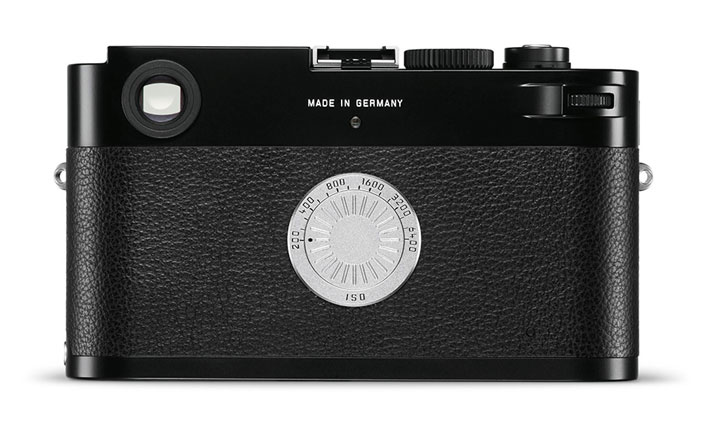Love it. A digital Leica in a film body. Sure there’s a lot of malice on the Web, ridiculing Leica’s latest $6,000 camera, the all-black digital Leica M-D. With emphasis on digital. What again distinguishes a digital from an analog camera? That’s right, the LCD screen, to give access to what’s on the memory card and to all those menu functions. Now there is a digital camera without basic digital functions. The message of no display? Concentrate on the essentials.
Bravo Leica, a timeless digital edition of the analog MD. Leica doesn’t care much about minds divided. Presented as a concept during Photokina 2014, the less is more. The M-D’s innards are identical to the $800 cheaper Leica M262 with display and buttons, but who needs those.
Everything on the M-D’s back (monitor, buttons etc.) was removed and replaced by a dominant ISO dial. The camera’s front shows the screw which is hidden by the Leica logo at other Leica M models. The M-D omits Leica’s famed red logo in the name of consistency. The camera has no type designation, except for a small engarving on the hot shoe. Absolute minimalism.
As the (9,000 more expensive) Leica M Edition 60, the Leica M-D leaves the photographer only access to the essential parameters: exposure time, aperture, focus distance and ISO sensitivity. And forget JPEGs. To get most out of the resulting shots without manual white balance, the Leica M-D shoots only in DNG format. That’s right. No video. Totally purist.
Instead of the back monitor, you’ll find the prominent ISO dial.
Aside from the price, this would be the perfect camera for me. Forget all the bells and whistles and clutter. Back to the basics. In the words of Leica:
The Leica M-D promotes its users’ concentration on what is essential: the picture.
 The tight focus on Das Wesentliche (the essential), says Leica, is immediately recognizable in the design of the camera, expressing purely functional, formal clarity and design characteristics such as a top plate in brass with a step at the end citing the design of the Leica M9. Utmost discretion.
The tight focus on Das Wesentliche (the essential), says Leica, is immediately recognizable in the design of the camera, expressing purely functional, formal clarity and design characteristics such as a top plate in brass with a step at the end citing the design of the Leica M9. Utmost discretion.
Both form above function and function above form.
In fact, by just steering clear of all the distractions digital cameras offer one can practice the M-D approach with any camera that offers manual selection of photography’s essential exposure time, aperture and ISO sensitivity trinity.
Again, fascinating M-D approach. Should be compulsory stuff to shoot the M-D way before resorting to all the tempting automatisms offered by digital cameras that largely lock us out of the creative process.
And just imagine the battery life.




